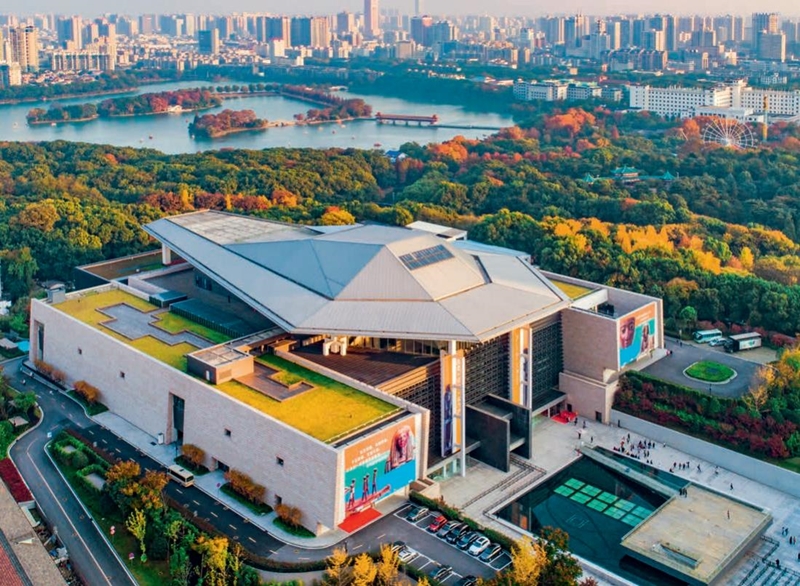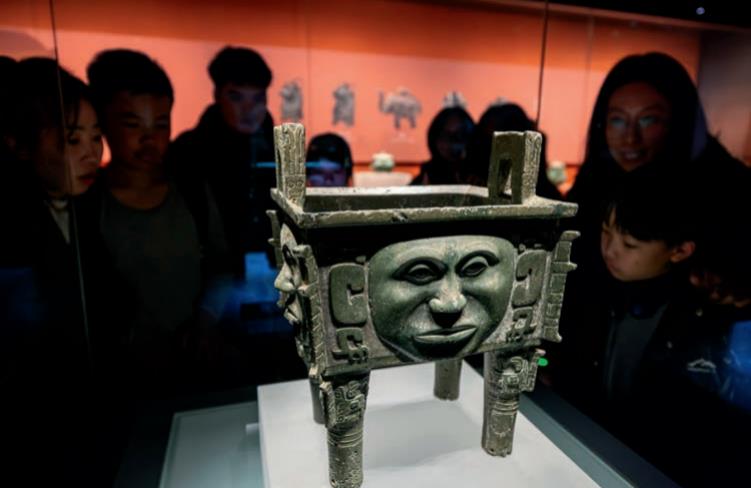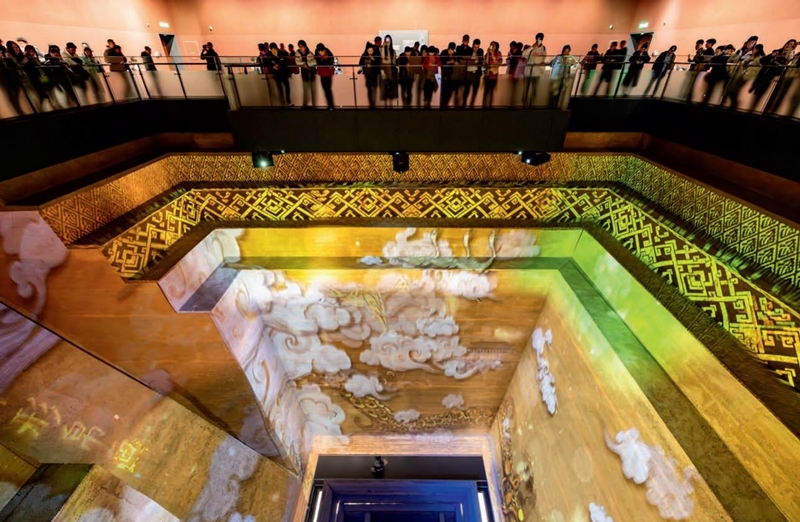The Hub of Hunan Culture

Tourists are often seen to stow their luggage in the lobby of the Hunan Museum. They either squeeze out a window during a business trip or beeline directly to the museum. The Hunan Museum has become a must-see for tourists visiting Changsha, capital of central China’s Hunan Province.
Since its establishment in 1956, the museum has been dedicated to displaying the regional culture and history of Hunan. It was among the first group of national first-grade museums in China and one of eight national key museums jointly established by central and local governments. Today, the museum houses about 539,000 pieces of cultural relics, providing an important window to Hunan culture.

Mawangdui Han Tombs
Visitors to the Hunan Museum should not miss cultural relics related to Xin Zhui, a noblewoman from the Han Dynasty (202 B.C.-220 A.D.). The museum receives an average of 3.5 million visitors each year. Most come to admire marvelous relics unearthed from the Mawangdui Han tombs, especially that of Lady Xin Zhui, dubbed the “sleeping beauty of the East” who lived more than 2,000 years ago.
Fifty years ago, archaeological excavation of the Mawangdui Han tombs in Changsha was completed, opening a window to the Western Han Dynasty (202 B.C.-8 A.D.): More than 700 painted lacquer objects representing the highest-level technique of ancient Chinese lacquerware were discovered. Exquisite silk apparel and embroideries evidenced why China was referred to as Seres (meaning the “Land of Silk”) in ancient Western texts. Over 1,400 pieces of silk and wooden and bamboo slips with inscriptions and images were kept in an underground “library” preserving the wisdom of ancient sages. When the body of Xin Zhui, the owner of the No. 1 tomb, was unearthed, her subcutaneous soft tissues remained soft and elastic, her limbs could be bent and stretched, and her eyelashes, toe fingerprints, and eardrums were intact, testifying to the superb human embalming techniques of the time. These findings presented a panorama of Chinese society more than 2,000 years ago.

A permanent exhibition at the Hunan Museum, the Changsha Mawangdui Han Dynasty Tombs Exhibition has a display area of over 5,000 square meters. With more than 1,000 precious cultural relics integrating history and arts, it depicts the daily life of Li Cang, a prime minister of the Changsha Kingdom during the Western Han Dynasty. By narrating stories of the past, the exhibition vividly showcases the lifestyles and funeral customs of the Han Dynasty and reflects how ancient Chinese people cherished life and embraced the multiverse concept. It also highlights China’s material and cultural-ethical advancements as well as its scientific and technological achievements and contributions to world civilizations.
A plethora of digital and immersive technologies were adopted to interpret various cultural relics and highlight the latest achievements in archaeological studies of the Mawangdui Han tombs as well as China’s fresh museum development in recent years.
As of late, the Hunan Museum has vigorously stepped up digitalization with an aim to build the world’s “most eye-catching digital museum.” Many of its exhibitions have become local cultural events with far-reaching influence. Moreover, it has collaborated with the Malanshan cultural digitization innovation center to showcase a digital presentation of life during the Han Dynasty and partnered with Harvard University to launch the Multimedia Exhibition of Mawangdui Han Culture with the theme “The Art of Life.” Based on this, the museum organized a series of activities commemorating the 50th anniversary of the excavation of the Mawangdui Han tombs, further expanding the influence of Hunan culture.
Mutual Learning among Civilizations
Leveraging its collection including objects unearthed from the Mawangdui Han tombs, bronzeware from the Shang (c. 1600-1046 B.C.) and Zhou (1046-256 B.C.) dynasties, cultural relics of the State of Chu, and porcelain from many eras, the Hunan Museum has conducted extensive cultural exchange activities with more than 30 countries and regions.
In 2009, cultural relics from the Mawangdui Han tombs were displayed in New York City, marking the first comprehensive and large-scale exhibition of Mawangdui findings in the United States.
In 2018, the Hunan Museum collaborated with 21 domestic counterparts and 26 international institutions to present a grand exhibition titled “Finding a Homeland at the End of the World: The Trans-Cultural Exchanges and Interactions between China and Italy from the 13th Century to the 16th Century,” recounting a historical tale of coexistence and integration between Chinese and Western cultures.
In 2021, the “Our Asia: Ancient Asian Civilizations Exhibition” was held at the Hunan Museum, showcasing the exchange and mutual learning among diverse Asian civilizations in ancient times.
In 2024, the exhibition “In Dialogue: Artifacts from the Mawangdui Han Dynasty Tombs and Contemporary Art” sparked conversations about cultural inheritance across time.
The Hunan Museum has left footprints on five continents. Over the years, the museum has sent professionals to Brazil, Italy, Serbia, and other countries and regions to participate in various annual meetings and academic seminars organized by the International Council of Museums. Representatives of the museum have been invited to attend the annual meetings of the American Alliance of Museums many times and deliver keynote speeches.
Moreover, in terms of exhibition exchange, the museum has dispatched several cultural heritage exhibitions to countries including the United States, Britain, France, Italy, Switzerland, Sweden, Mexico, the Netherlands, South Korea, Japan, Tunisia, and Singapore. It has also reached a series of cooperation agreements with international counterparts in terms of talent training, scientific research, cultural heritage protection, museum planning and management, and other areas, yielding remarkable results.
Across decades, the Hunan Museum has evolved into a treasure trove for cultural heritage protection and utilization. Its rich collection, ranging from prehistoric stone tools and bronze ritual instruments of the Shang and Zhou dynasties to objects unearthed from the Mawangdui Han tombs and calligraphy and painting by the literati of the Ming (1368-1644) and Qing (1644- 1911) dynasties, condenses human wisdom across the ages and testifies to the profound history of Hunan.